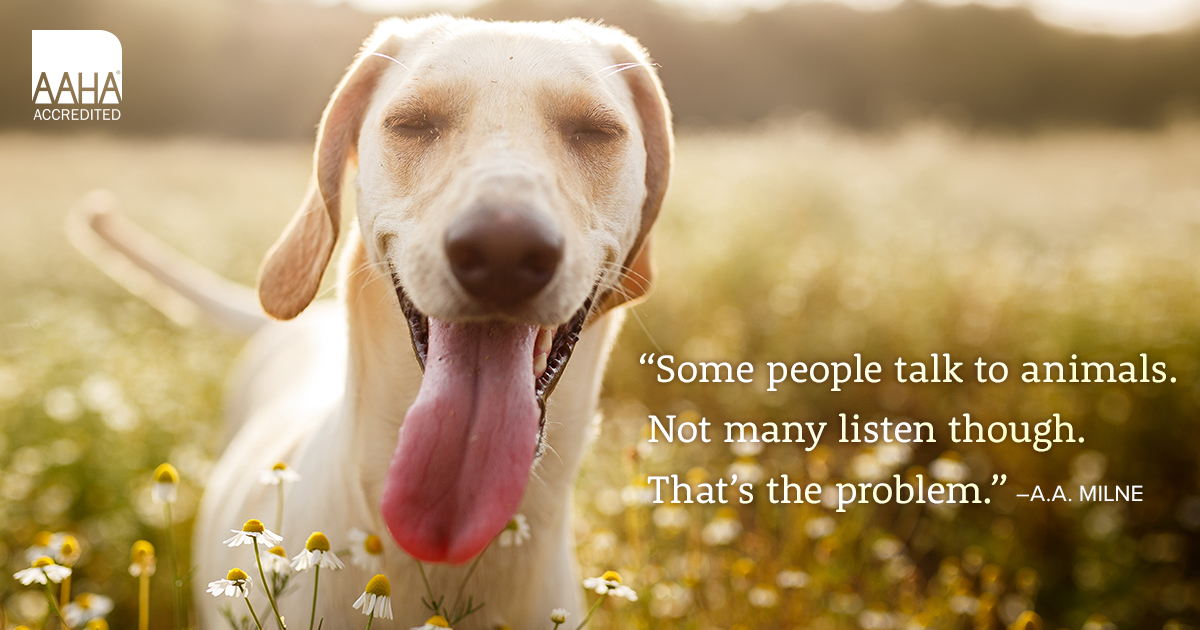
Pet Health Education Handouts
-
While dogs do not speak the human language, they still communicate quite effectively and tail wagging enhances their ability to communicate. Position and speed of tail wagging takes on different meanings. Interestingly, dogs do not talk to themselves. They will wag their tails in front of humans or other dogs, but they do not wag when alone!
-
Pet birds not raised with other birds typically bond to their owners and may not want to live with another new bird. If you feel your bird is lonely or bored, first consider providing more enrichment in the form of safe toys and entertainment. Teaching your bird how to forage is extremely beneficial for his/her overall well being. If you decide you want to introduce another bird into your household, be sure you are ready to take on the work of caring for more than one bird and be certain to introduce the new bird slowly. All new birds should be checked by a veterinarian before being introduced, and the new bird should be quarantined in a separate, isolated room within the house for 30-45 days. Some birds may never accept new birds in their territories. Consult your veterinarian if you are experiencing problems.
-
Using desensitization and counterconditioning, a behavior modification technique, can change a pet's negative emotional response to triggers. The technique is well suited for pets experiencing fear, frustration, or hyperarousal. Desensitization must be done slowly and systematically to avoid inadvertently sensitizing the pet.
-
Play is important. All kittens need the opportunity to play with toys as well as social play. While learning about their environment, kittens can damage valuable objects, including furniture and curtains. Toys and treats can be hidden inside empty boxes and kiddie tunnels to satisfy a kitten’s need to explore. Supervise kittens carefully to prevent damage and to keep them safe.
-
Lick granuloma in dogs, also known as acral lick dermatitis, is a condition manifested as chronic licking of an area of skin, usually on the forelimbs. This condition is thought to be both physical and psychological in nature. While the condition can be frustrating to get under control, most cases of lick granulomas can be successfully treated if the owner is willing to pursue extended tests and treatments.
-
Crate training is most used with dogs, but it can be useful for kittens and cats too. Crate training is useful in many situations, such as providing a safe place when home alone or unsupervised. Cats that are calm in their crates experience less distress when they need to travel, visit the veterinary hospital, or stay at a boarding facility. Starting while your cat is young makes training easier, but even adult cats can be trained to relax in a crate. If your cat shows signs of distress (e.g., prolonged vocalization, trying to escape, salivation, rapid continuous movement) while using the training methods provided in this handout, consult your veterinarian.
-
Crate training is useful in many situations, such as providing a safe place when home alone or unsupervised. Dogs that are calm in their crates experience less distress when they need to travel, visit the veterinary hospital, or stay at a boarding facility. Starting while your dog is young makes training easier, but even adult dogs can be trained to relax in a crate. If your dog shows signs of distress (e.g., prolonged vocalization, eliminating inside the crate, trying to escape, salivation) while using the training methods provided in this handout, consult your veterinarian.
-
Cats can have hearing loss due to increasing age or chronic ear infections, or they may be born with a defect. Deafness in cats can present some challenges, but overall they can have healthy, normal lives. It is possible to teach your cat household routines by using hand signals and body language. It is important to take their deafness into account when considering their safety, and they must remain indoors or in outdoor enclosures.
-
Dogs can have hearing loss due to increasing age or chronic ear infections, or they may be born with a defect. Deafness in dogs can present some challenges, but overall they can have healthy, normal lives. Training is still possible by making some modifications and incorporating hand signals. It is important to take their deafness into account when considering their safety and ensure that they are never off leash on or near a street.
-
Dogs pull ahead and lunge forward on leash for several reasons. Loose leash walking is a complex skill that requires patience, planning, and persistence. Positive reinforcement training is effective for teaching dogs how to walk nicely on a leash once their welfare needs have been met.

